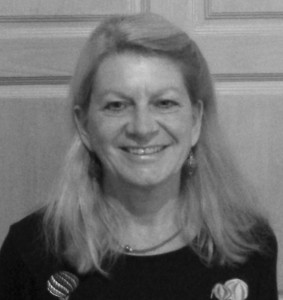13 April 2017
Revolution – Russian Art 1917-1932
Royal Academy
reviewed by Lynda Goetz

 The time span covered by this exhibition in the RA main galleries ends roughly where the exhibition of American art, America after the Fall, currently showing in the Sackler Gallery begins. However, whereas you have until 4th June to visit the American exhibition, you have only until 8pm on Sunday evening (16th April) to view this one, marking the centenary of the Russian Revolution.
The time span covered by this exhibition in the RA main galleries ends roughly where the exhibition of American art, America after the Fall, currently showing in the Sackler Gallery begins. However, whereas you have until 4th June to visit the American exhibition, you have only until 8pm on Sunday evening (16th April) to view this one, marking the centenary of the Russian Revolution.
There is a lot in this exhibition worth seeing; there are also possibly a few more paintings that you might consider having on your walls (were they for sale and were you a millionaire) but perhaps the images you come away with from your time spent in the galleries are the those of the black and white films. There are several these, all illustrating the dynamic enthusiasm, innovation and propaganda which characterised those years after the overthrow of the autocratic Tsarist regime and before the autocratic regime of Stalinism completely crushed the burgeoning creativity. In 1932 Stalin decreed Socialist Realism to be the only acceptable artistic style for the Soviet Union.
In the intervening years, experimental and inventive work was taking place throughout the arts, even though much of it had to be directed towards encouraging the masses to engage with and support Communism. Communism, being at the time of the Bolshevik revolution a minority movement, needed propaganda to spread its ideology to the millions of largely rural and illiterate members of the population. Lenin’s Plan for Monumental Propaganda saw artists unfamiliar in the West produce ‘art for everyday life’, such as ceramics and textiles, to convey the Bolshevik Party message. Alongside this Socialist Realism, avant-garde artists also embraced what they saw initially as the promise of new art for a new world. Chagall and Kandinsky are thus represented with a couple of impressive paintings each, as is Kazimir Malevich with a room of his own, but the overall feeling of the exhibition is of propaganda and the repression which, even by the early 1920s, had taken hold.
Most of us are aware of what the revolution rapidly became and of the betrayal of the workers and peasants by their leaders. In the first gallery the official portraits of Lenin and Trotsky, by Isaak Brodsky, make them appear almost benign and patriarchal. The one which shows Stalin looking rather like a cartoon circus ringmaster was (unsurprisingly) never shown to him. By the time one reaches the Malevich gallery, the faceless peasants (Peasants c.1930) illustrate only too clearly the way those in power viewed the millions subjugated to their whims. In other galleries are idealized images of industrial workers and healthy, cheerful-looking peasants on collective farms as well as some nostalgic views of the ‘old Russia’ with village celebrations and the onion-shaped church domes of the Orthodox religion outlawed by the Communists.
The Kuzma Petrov-Vodkin gallery was a revelation, at least to me, with his synthesizing of Eastern and Western art, his classic still-lifes, his impressive self-portrait and his memorable image of a young man astride a flying red horse, interestingly entitled Fantasy, which appears on the gallery guide. Petrov-Vodkin managed, unlike so many others, to retain the support of the regime throughout this period and in 1932 was appointed President of the Leningrad Regional Union of Soviet Artists. Like Malevich he was given his own room in the Exhibition ‘Fifteen Years of Artists of the Soviet Republic’ at the State Russian Museum in Leningrad. That exhibition in November 1932 effectively marked the end for freedom of the arts in the Soviet Union; from then on the Union of Soviet Artists was the sole arbiter of Soviet art.
Before you leave the galleries there is a booth where you can (if you have not had enough by then) watch a parade of black and white photos of those who were executed during the Great Purge of 1936-8. It is a depressingly long list and includes, among other similar figures, the famous Soviet theatre director Meyervold, featured in an earlier gallery, who had initially enthusiastically embraced the new Soviet theatre, but who was opposed to Stalin’s Socialist Realism. Chagall and Kandinsky both of whom returned to Russia in 1914, but left in 1922 and 1921 respectively, each for different reasons, were probably extremely relieved to have done so. If nothing else, and of course there is a great deal else, this exhibition reminds us what Russia was and still is; ‘revolution’ yes, but ‘liberation’ is not a word which springs to mind.
This exhibition at the Royal Academy, Burlington House, Piccadilly is open until 10pm Friday and Saturday and until 8pm on Sunday. Normal opening hours (10am – 6pm).
If you enjoyed this article please share it using the buttons above.
Please click here if you would like a weekly email on publication of the ShawSheet

